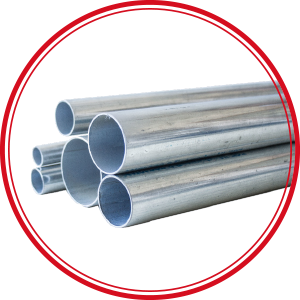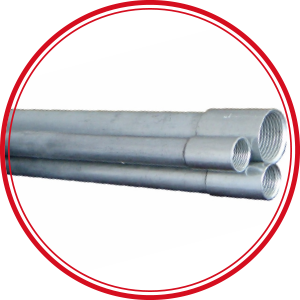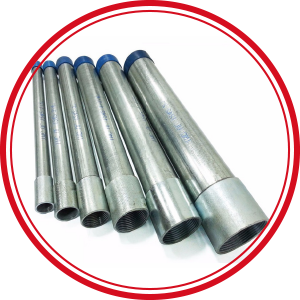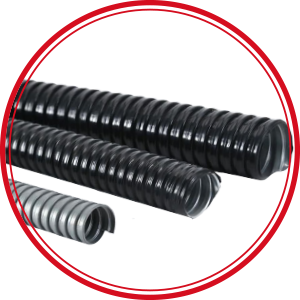Electrical Metallic Tubing (EMT)
Electrical metal tube, or EMT, is often composed of galvanized steel, although it may also be made of aluminium. Because EMT is thin and lightweight compared to RMC, it is sometimes known as “thin-wall” conduit. EMT is stiff, but it may be bent with a conduit bender, which is a basic instrument.
Setscrew or compression-type fasteners are used to secure the couplings and fittings on EMT. The tubing is not threaded like RMC tubing. In residential and light commercial construction, it is often utilized for exposed indoor wire lines. It must be
assembled with appropriate waterproof connections if put
outside in exposed places.
Rigid Metal Conduit (RMC)
Rigid metal conduit, or RMC, is galvanized steel tube with
threaded fittings that is installed. It’s generally used outside to shield electrical wires, panels, and other equipment from
damage, and it can also offer structural support.
Intermediate Metal Conduit (IMC)
IMC (intermediate metal conduit) is a robust steel electrical conduit that is designed for outdoor use and strong connections. It was created to safeguard insulated electrical wires and cables. It performs the same functions as rigid metal conduit (RMC), but weights roughly a third less. It can be removed the requirement for a heavier-walled conduit by using IMC in any places where it is permitted.
Flexible Metal Conduit (FMC)
Flexible metal conduit (FMC) is also known as “Greenfield,” after its inventor’s surname. It is flexible because to its spiral
design, which allows it to slither around walls and other
buildings. Standard FMC is used for short lines between a wall box and a motor or stationary device, such as a garbage
disposer, in dry interior settings.




